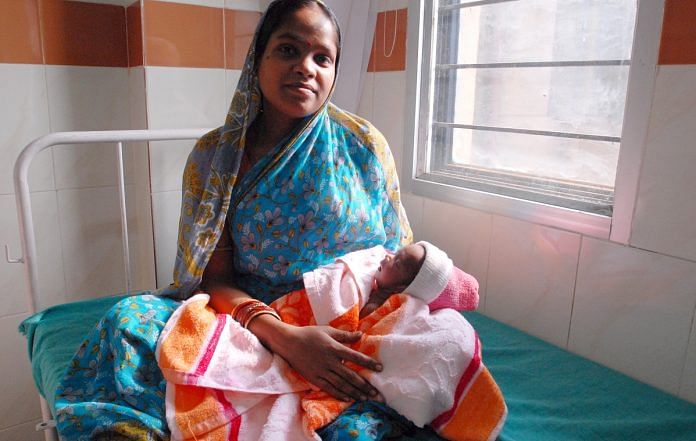Gujarat, Haryana, Rajasthan, Uttarakhand and Maharashtra all saw steep declines in the ratio, while the only big states to improve were Punjab, UP and Bihar.
New Delhi: The NITI Aayog’s latest report, titled ‘Healthy States, Progressive India’, has found dismal outcomes in India’s child sex-ratio at birth (SRB). The report, released Friday, showed that the most steep decline in sex-ratio was in Gujarat, where the SRB fell to 854 females from 907 females per 1,000 males born.
NITI Aayog CEO Amitabh Kant, health secretary Preeti Sudan, and the World Bank’s India director Junaid Ahmad released the index Friday. Punjab, Uttar Pradesh and Bihar are the only states where the SRB improved from 2012-14 (base year) to 2013-15 (reference year).
“The sex ratio at birth is an important indicator and reflects the extent to which there is reduction in number of girl children born by sex-selective abortions,” the report added.
Seventeen of India’s 21 large states have seen a decline in the SRB – with Haryana (drop of 35), Rajasthan (drop of 32), Uttarakhand (27) and Maharashtra (18) following Gujarat in the list. Punjab’s ratio has risen by 19, followed by Uttar Pradesh (10) and Bihar (9).
An increase in the under-five mortality rate in Haryana (up from 40 to 43 deaths per 1000 live births), along with the decline in the SRB, have seen the state record a negative incremental score in the index. Gujarat’s score on this parameter is negative too.

No knee-jerk fixes, but serious problem nonetheless
Rizwan Parwez, national co-ordinator at NGO Girls Count, however, said this wasn’t conclusive data.
“Sex-ratio at birth fluctuates; it’s not constant. So reaching any conclusions requires we be patient. We should wait for the census for more accurate figures, as it’ll gives us indicators for the past six years. It’s okay to look at this as a trend. It’s also important to look at NFHS-4 data,” Parwez said.
However, he added: “Any decline in sex ratio clearly establishes the fact that sex discrimination is happening. Any decline below 950 is a telling sign. Improving data doesn’t mean that we have corrected all forms of discrimination either, as there are other indicators of patriarchy and showing one does not want a girl child.”
Fresh debate over PNDT Act
The report also stressed “a clear need for states to effectively implement the Pre-Conception and Pre-Natal Diagnostic Techniques (PCPNDT) Act, 1994”.
However, Dr Anoop Gupta, medical director at the Delhi IVF and Fertility Centre, said this would just harass doctors.
“The PNDT Act is not constructive; it should be abolished. The norms aren’t okay in principle. If someone tells says so-and-so doctor performs sex-determination, the doctor is thrown into jail,” Gupta said.
Noting that ultrasounds still persist, he said: “If they want to improve the child-sex ratio, patients should be penalised, not doctors. Most cases of sex-determination do not even require doctors; ultrasounds can be installed at home, and at dubious places.”
But Parwez said the PNDT Act was ‘significant’, and reiterated the need for its better implementation.
“Not all IVFs have registered themselves under the PNDT Act. Delhi has registered all IVF centres, Rajasthan would also now be taking up this exercise of registering. (But) the PNDT Act by itself is not enough; it needs to be implemented well too,” he said.






